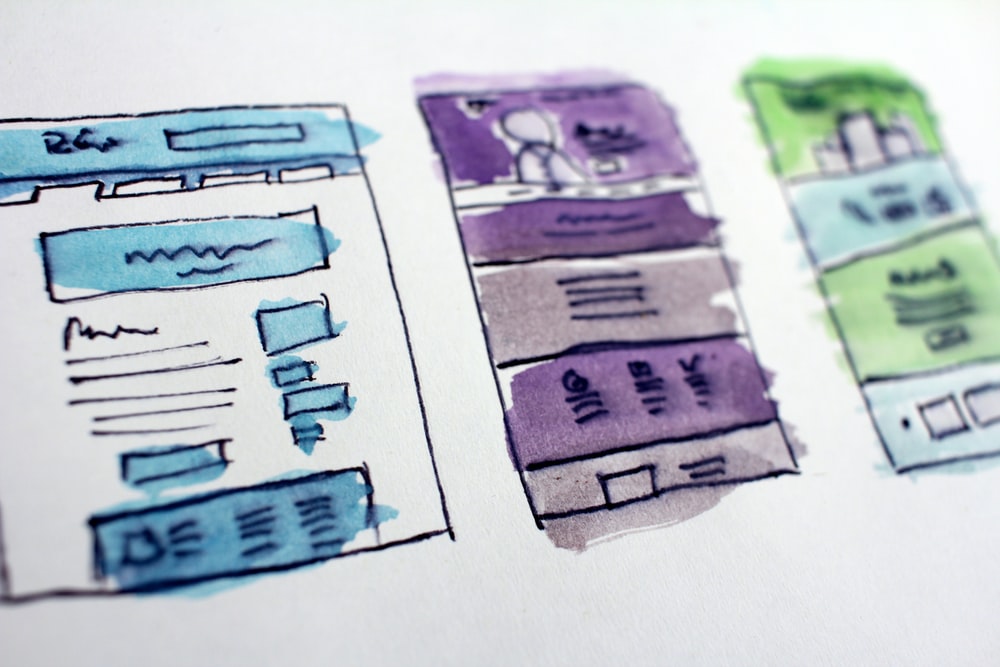What is SaaS marketing? And what should SaaS marketers be focusing on to create a successful SaaS marketing strategy? The basic concept of SaaS marketing is simple: subscription models. The customer stays in touch with the company for much longer than if they were purchasing a tangible product.
This means that it is critical for companies to keep in touch with their customers after they have purchased the SaaS product.
This is where CRM platforms come into play. They can track customer information, help create a personalized customer experience, and help a company retain customers.
What is Software as a Service (SaaS) Marketing?
Software as a service marketing (SaaS marketing) is a sort of marketing that focuses on raising awareness and promoting software as a service goods. SaaS marketing aids in the introduction of a product to a market, positioning of a product, and raising awareness of a SaaS company.
What is a Software as a Service (SaaS) marketing strategy?
Here's how a SaaS marketing strategy is different than other digital marketing strategies.
Product
When advertising a SaaS product, product marketers must be inventive. The majority of SaaS products, if not all, are intangible by nature. SaaS solutions, on top of that, might be complicated, with a variety of features.
Your SaaS marketing plan should be straightforward and appealing, but educational enough for the target audience to understand how the SaaS solution may help them solve their problems.
Customer
A B2B or B2C organization is the most common SaaS customer. The decision-makers in these businesses should be the objective of your SaaS marketing strategy. If your SaaS application, for example, allows you to track warehouse inventory levels, you should appeal to the heads of logistics at both B2C and B2B organizations.
There's also the dreaded churn to contend with. Current clients canceling their subscriptions is referred to as SaaS churn. Less revenue equals more turnover.
In order to prevent churn, your SaaS marketing approach must be continuous. Other companies reduce marketing efforts after a customer has been acquired, but in the SaaS industry, you must boost your efforts.
Customer experience (or customer success)
When compared to other goods, SaaS firms typically have lengthier sales cycles and several stages. This entails a lengthier client journey, which traditional marketing may not be able to accommodate.
Customers may ask inquiries about new words or seek personalized demos to understand how the SaaS solution will function with their existing frameworks.
Competition
The SaaS product market resembles a crowded Target on Black Friday.
A search for project management software on Capterra turns up 1,227 results. So, how can you make your SaaS product stand out among the crowd?
First and foremost, perfect your company idea and brand. Second, use interactive and interesting material to its fullest potential. Your firm may benefit from digital marketing by developing excellent content and addressing SEO optimization. The best way to stand out in a crowd is to blend in.

Pricing
Pricing strategy is an important aspect of SaaS marketing, even if it may not appear to be directly tied to marketing.
Companies may compete in the SaaS industry by offering competitive pricing. To target B2C and B2B firms of various sizes, SaaS providers might employ tiered pricing structures and subscription buyer personas.
Simultaneously, SaaS pricing must be transparent and precise so that potential consumers know exactly what they'll get when they subscribe. The conversion rate of leads to sales can be improved by providing simple price information to potential clients.
Content marketing
A good SaaS content marketing strategy will include a clear goal and measurable metrics to measure the success of your content efforts.
Then, it's time to create content that speaks directly to your audience's needs, while not relying on guesswork.
You'll find it much easier to write content that addresses a specific problem, while at the same time allowing you to reach a wider audience. SaaS content marketing should be focused on solving problems, not just selling a product.
While creating content, consider how you can use different mediums and channels, including blogs, social media, videos, podcasts, infographics, and more.

Content marketing can drive significant success
Content should be informative, engaging, and aligned with your solution. Use tools like Trello to keep track of your team's work.
Follow up regularly on the effectiveness of each piece of content, and evaluate how you organize it.
Doing this will help you determine how to organize content based on expected lead behavior, brand presentation, and new audiences. Once you have a content marketing strategy in place, you'll need to brainstorm new ideas, such as SaaS for SaaS.
In addition to blogs, SaaS content marketing should be aimed at educating customers and building relationships.
Typically, SaaS content marketing guides the reader to the software solution, but Zendesk's annual customer service conference focuses on the human side of customer service. It also publishes a magazine and an online journal, both focused on the human side of customer service.
A blog posts on various aspects of customer relationships are shared by 200+ people in a week. An annual e-book of the same name is published by Zendesk.
Persona-specific messaging
When developing SaaS marketing messages, identify your personas. You can start by determining which industry your product is meant to serve.
SaaS solutions typically cater to one vertical, and prospects outside that segment are considered unqualified.
However, SaaS products such as CRM and ERP software are widely adopted across industries, so you can still tailor your messaging to meet the needs of different segments.
In this case, your value proposition will need to be adjusted to match each persona.

What is a persona?
A persona profile is a map of information about the people in your buyer personas. It will indicate their buying behaviors and demographic information. The goal is to improve your product or service for them.
By identifying the different personas of your product, you can keep your product relevant to the needs of your target audience.
Your product can change with their needs, too, ensuring it stays relevant. And while you can't please everyone with your SaaS product, knowing your personas will help your marketing efforts.
Drive more visitors of your ideal customer persona
Your personas may have different paths to conversion. To reach their ideal goals, you should tailor your messaging to their journey.
Include a compelling Call-To-Action, share data, and show tangible results. In other words, create a "Fear of Missing Out" effect and get them excited about your product.
If you have several personas, use each of them with unique messaging and tactics.
A segment of your customer base (your best customer) is your ideal customer persona
Your buyer persona is a distinct segment of your customer base. Each persona has different needs and goals.
Your message must target those needs, and not ignore your company's unique brand voice and personality. Identify your personas, their pain points, their fears, and dreams, and then make it a part of your messaging.
When you have a buyer persona, you can use those to target your marketing efforts.
Consider the life cycle of the buying decision
When developing persona-specific messaging, consider the role of each persona within the organization.
The first stage of a SaaS sales cycle is the influencer, and the last is the decision-maker. If you are marketing to a business manager, consider who your customer personas are, and create messaging accordingly.
In this way, you can get a more targeted response and more relevant leads.
Creating a buyer's journey
Successful SaaS marketing involves creating a buyer's journey, from first contact with a sales representative to successful deployment of the product.
As a buyer, you want to engage with your sales representative and create a strong relationship.
In addition to providing the best value proposition possible, you should also provide advice on how to position the product and make the buyer happy with your solution.
Once you've created this relationship, you can then focus on closing the deal and turning that prospective client into a paying customer.
Understanding the customer or ideal customer persona
When creating a buyer's journey, you need to understand their behavior and what motivates them to buy. A buyer is not looking for a pushy salesperson; they're looking for answers to the most critical questions.
It's important to realize that your buyer has already narrowed down the problem they're trying to solve and has probably started researching different solutions. They're ready to buy and are also looking at the competitors' solutions.
They are looking for the "best deal" and "best product" to make a decision on whether or not to purchase your solution.
Focus on converting for LTV and retention
SaaS marketing should also focus on the customer's lifetime value and retention. Content is one of the most important aspects of the buyer's journey, and customers don't want to see pre-purchase messages.
Instead, they want to get an understanding of the product, so content should focus on providing them with information they need to make an informed decision.
Create customer personas and cater to each stage of the buyer's journey. This might include newsletters, surveys, giveaways, and tweets about product tips.

Answering questions for your core buyer
After compiling a list of vendors and products, the buyer will do further research on each one. The buyer will also research each vendor's unique attributes and benefits.
He or she will also ask questions about the ease of purchase and whether or not the solution meets their needs.
Ultimately, the buyer will make a purchase after answering these questions. SaaS marketing creates a buyer's journey based on this research.
Measuring customer churn
There are several different ways to measure customer churn in a SaaS business. The most common way is to subtract the number of customers left at the end of a month from the number of customers at the beginning of that month.
In this method, the churn rate is disassociated from growth, which is particularly relevant for young, growing businesses. Another method is to use an average contract renewal period, which accounts for 10% of a month's customer loss.
Total change from your revenue stream
Another method is to calculate the total change in recurring revenue from a pool of customers over a period of time. This measure is called net revenue retention, and it is very important for SaaS companies to understand, since it can show both the positive and negative effects of price changes and lost customers.
Customer retention is crucial in SaaS businesses, as customer acquisition costs are very high. In contrast, the cost of maintaining existing customers is relatively low, averaging $0.71 per customer.

MRR impact
Churn can also be measured in terms of monthly recurring revenue. By using this measurement, you can know the percentage of customers who cancel their subscription after one month, which can greatly increase your revenue.
However, it is important to remember that recurring revenue churn is not the same as monthly churn. Therefore, you should look at the monthly churn percentage instead of the overall churn percentage.
Customer churn is an important metric to measure in a SaaS business. While some churn is inevitable, you should try to avoid writing it off as "unavoidable" and instead focus on solutions.
Retention and churn
In addition to understanding the reasons behind churn, customer retention is also important. By identifying the factors that cause customers to leave a company, you can develop strategies to increase value for your existing customers.
One of the most important metrics for a SaaS business is its customer retention rate. This metric enables you to determine the percentage of existing customers who stick with your product or service.
By combining these two metrics, you can estimate future earnings based on current retention rates. This metric is often combined with the Customer Churn Rate to determine your company's future earnings potential. A high retention rate means a high customer value.

SaaS marketing strategies to consider
SaaS marketing strategies to consider.
1. Create content centers for microsites
Jake Stainer's advise to "destroy your blog" may be familiar to you. That's correct, get rid of the blog and replace it with a magazine.
The idea of creating magazine material rather than blog content will elevate the content you're creating and the relevant topics you choose to become experts on. More information about construction magazines may be found here.
Microsites content centers, on the other hand, take the magazine content development concept a step further. Why make just one magazine when you can make several? Have each magazine focus on a key issue that you want customers to learn about when they come to your SaaS company.
Because these unique content centers, or magazines, might relate to aspects of your brand but are hyper-focused on a core field of expertise, it may make appropriate to let their UX, UI, and even core branding wander a little.
You're essentially creating content regions that appeal to different buyer personas and ICPs, so don't be afraid to address these individuals not only in the content topic, but also in the method you present your information.
In point number six of the SaaS marketing playbook, you can learn more about creating client profiles for SaaS businesses.
Perhaps you're writing for CEOs or CMOs in order to raise awareness of your SaaS brand among management teams. Long-form information will be skimmed or ignored in these sorts of positions since they are famously busy.
In this instance, you'll want to communicate your knowledge in little chunks. For these busy folks, videos or even 5-minute podcasts may be the best option.
2. Put product videos in places where customers may view them
After seeing a brand's video, roughly eight out of ten customers have purchased software or an app from a SaaS company.
Video, on the other hand, is known for taking a long time to create. Whether you outsource or manage your video production in-house, if you don't have a distribution strategy in place, all of your hard work will be for naught.
With over 2 billion logged-in active viewers each month, Youtube is a terrific location to build up a video marketing plan for SaaS enterprises, as you've probably heard. It's especially successful if you use the platform as an industry-specific FAQ.
Increasing awareness:
- What is SEO's role in my SaaS business?
- When should I use a SaaS SEO company?
- What is the best way to create a SaaS SEO strategy?
The most effective SEO SaaS solutions for beating the competition
Because your videos have a chance of ranking on Google, Youtube is an excellent place to start for an inbound marketing campaign.
If you're simply intending to use it on social media, avoid creating video marketing content. Consider creating evergreen content and using the same keyword approach for video as you would for a blog magazine.
Second, if you're not making films for search, make sure you disseminate them to as many people as possible. Examine how videos may be included into your sales funnels, email journeys, and, most importantly, your PPC landing pages.
Your video approach will, of course, be influenced by your business model (free trial offer, customer acquisition strategy, self-served or sales-led, etc. ), target audience, value proposition, product, and a variety of other factors. Define a video strategy that's right for your company.
3. Encourage growth by fostering a sense of belonging
A strong community's influence should never be underestimated. You should be seeking to establish and cultivate a community from the beginning of your SaaS business. Your community, whether it's a few individuals or thousands, is only as strong as its skeletal members.
Build a community on a day-to-day basis
Building a community is one thing, but managing, engaging, and maintaining that community is quite another. You're not developing an email list here; you're building relationships, which requires some real forethought.
Recruit ambassadors
Find people that are passionate about the product and want to be leaders in their communities. Having just firm workers administer communities has substantial overhead expenses and is unrealistic, especially given the worldwide nature of many communities.
Make new contacts
Allow members of the community to communicate with one another. It's a sign that your community is starting to grow when members step in to help each other and answer each other's queries rather than waiting for the community management to do so. However, you must first make it possible for them to assist one another.
As technology and consumer preferences evolve, marketing trends come and go. Your SaaS brand and marketing approach, on the other hand, may always rely on people's inherent need to connect. When you combine it with a shared interest, you've got something that can boost ROI by up to 4,530%.
4. Identify client wants that aren't related to your product
Your clients are people. They have demands that extend well beyond your product, whether it's in their professional and corporate life, or in their personal interests and relationships. You're not marketing to consumers; instead, you're marketing to individuals like you.
Spend some time investigating the users of your present product. This isn't the demographic or consumer profile you're looking for. Spend time investigating the users who are now with you. Who are these individuals? Do you see any commonalities among them?
Go a step farther and inquire about their wants outside of your product. What are they having trouble with in terms of company management or even mental health? Once you've discovered these people's wants that aren't met by what you have to offer, try to match what your SaaS firm can do to suit those demands while being true to your goal and vision.


